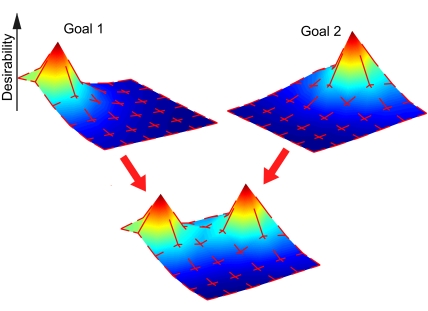Fig. 1.
Examples of desirability function in a task of city block navigation. An agent gains a reward (negative cost) of 1 by reaching to a particular corner (goal state), but pays a state cost of 0.1 for being in a nongoal corner and an action cost for deviating from random walk to one of adjacent corners. (Upper) Two examples of desirability functions with 2 different goal states. The desirability function has a peak at the goal state and serves as a guiding signal for navigation. The red segments on each corner show the optimal action, with the length proportional to the optimal probability of moving to that direction. (Lower) Shown is the desirability function when the reward is given at either goal position. In this case, the desirability function is simply the sum of the 2 desirability functions and the optimal action probability is the average of the 2 optimal actions probabilities weighted by the levels of 2 desirability functions at a given state. This compositionality allows flexible combination and selection of preacquired optimal actions depending on the given goal and the present state.

